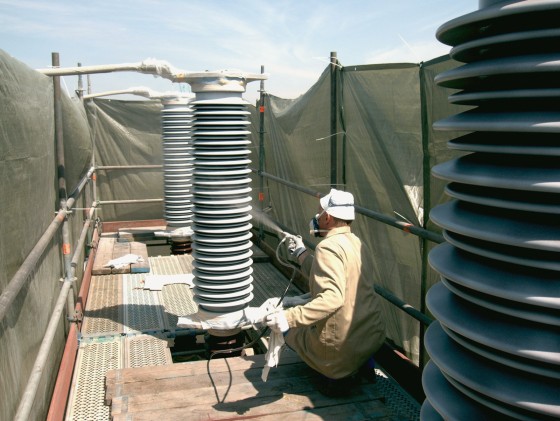
Transmission & Distribution Industry: Trends and Challenges
Millions of people around the world have been connected to electricity grids over the years. Yet, for many, access to electrical power is still limited or non-existent. At the same time, manufacturers in traditional economic regions are having to develop new technologies and adapt their existing products to meet changing challenges.
Disadvantages of Porcelain and Glass Insulators
Silicone-based solutions have an important role to play in keeping existing insulators functioning reliably. Insulators used to be made from traditional materials, such as glass or porcelain – but these come with some inherent disadvantages: When the surface becomes moist, the moisture combines with dirt particles and the salts they contain, forming a conductive film. Sooner or later this film leads to partial discharges, destroying the electrical components and reducing the performance of the power grid. To avoid this, the surfaces of porcelain and glass insulators have to be cleaned regularly – a complex and expensive process. A more modern, more technically efficient solution would be to replace glass and porcelain insulators with silicone rubber counterparts. However, that requires removing the old parts completely and replacing them with the new ones.

The Advantage of Silicone Coatings
Instead of being completely replaced, insulators can be refurbished using specially-formulated silicone coating solutions, which are sprayed onto the ceramic bodies as emulsions and form a protective silicone film. Not only are the coatings excellent insulators, they are also exceptionally hydrophobic – water-repellent. When rain touches the silicone surface it beads into separate droplets. This precludes the formation of a conductive film and prevents the typical flashover scenario caused by a wet film layer. Moreover, the silicone coatings are highly resistant to tracking and arcing.
POWERSIL® XLR® for Economical Processes and Greater Operational Reliability
Modern composite insulators are increasingly being used for new installations. Two-component, extra-low-viscosity liquid silicone rubber POWERSIL® XLR® (extra liquid rubber) from WACKER is a truly innovative technology in this field. This outstanding material is the preferred product for low-pressure casting of the protective silicone. Some 80 percent of composite hollow-core insulators in Europe are now made by low-pressure casting. Nearly all of the companies that have adopted this process use POWERSIL® XLR® – because it is more economical and offers greater operational reliability.
Advantages
- Good mechanical properties
- Excellent dielectric properties
- Ready-to- use
- Excellent processing characteristics in suitable mixing and metering equipment
- 2-component system
- Extremely-low-viscosity liquid silicone rubber
- Very good dielectric properties
- High tracking resistance
